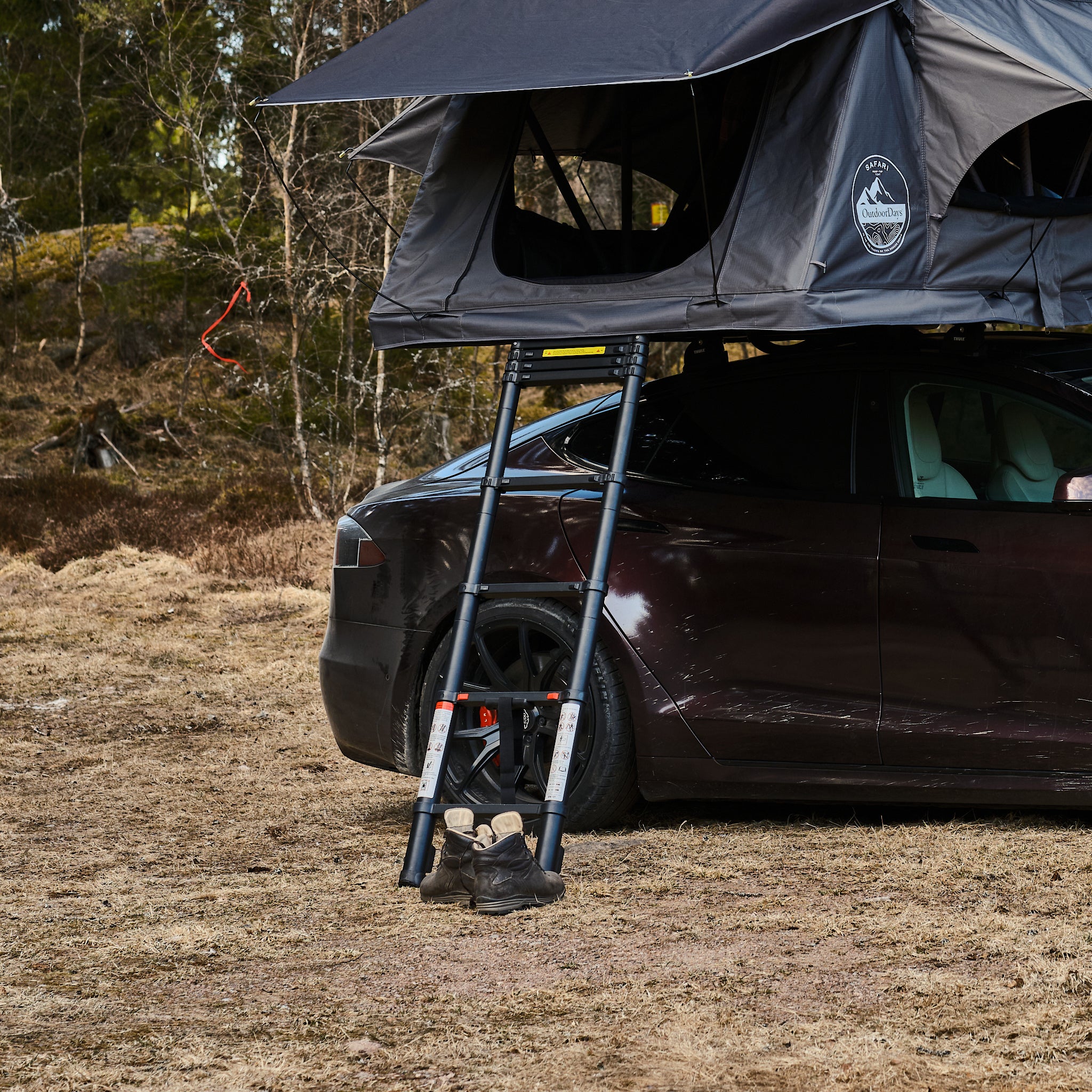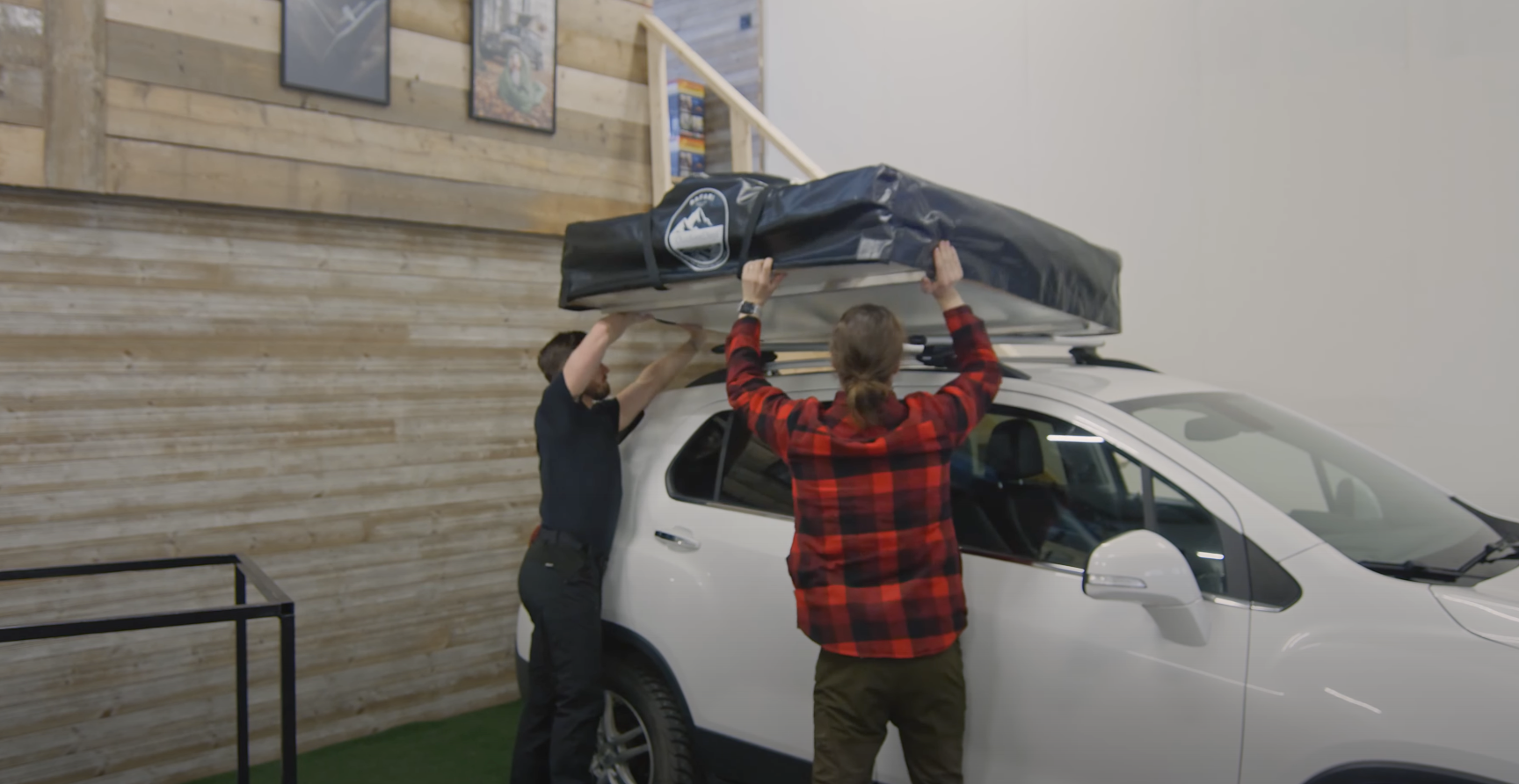Taktält har en lång historia som sträcker sig tillbaka till 1940-talet och har används globalt av olika skäl.
I Afrika används taktält för att skydda mot rovdjur, medan de i Australien erbjuder skydd mot spindlar och ormar. I Sverige skämtar vi ofta om att taktält skyddar oss från myror och hårda kottar.
OutdoorDays har varit en ledande aktör på den svenska marknaden sedan 2014 och är en av de mest etablerade återförsäljarna av taktält. Med över 8 000 taktältskunder sedan 2014 har vi byggt upp en gedigen expertis som vi är stolta över.
Denna guide är utformad för att hjälpa dig hitta det taktält som bäst möter dina behov och önskemål.
Vad krävs av min bil?
Takräcke
För att montera ett taktält på din bil krävs någon form av takräcke. Det finns olika typer av takräcken och de som rekommenderas är Thule Evo. (ej Edge)Ett annat alternativ är också takkorg från tex Front Runner. Ditt takräcke måste ha cirka 75cm ”rent räcke” för att slippa flytta in skenorna.Takräcken som ”kläms” i bildörren rekommenderas inte.
Vikt
Vanligast är att takräcken klara mellan 75 till 100kg. Den vikten är den dynamiska vikten när du kör din bil. (för att räcket ska orka hålla fast lasten vid en kollision/bromsning.) Dynamisk & statisk viktDynamisk vikt = vid färdStatisk vikt = stillaståendeGenerellt så är den statiska vikten 3-5x högre än den dynamiska vikten.
Storlek av taktält
När du väljer taktält, så kan storleken på taktältet vara svårt att bedöma.Du ska inte jämföra ett taktält med sin säng hemma.Ett 140cm brett taktält är större än en 140cm bred säng. (du kan utnyttja hela ytan)Dessutom får du inte glömma att för att hålla värmen är det inte bra att ha ett för stort taktält. Stora tält tar längre tid att värma upp – Lagom är bäst!
Vad är skillanden mellan hårt och mjukt takält?
Det finns 2 typer att taktält - Mjukskal & hårdskal.
Båda typen av tält har sina för & nackdelar.
I nästa kapitel av denna guide, kommer vi gå igenom vår långa erfarenhet kring för- & nackdelar med mjukskal & hårdskal.
MJUKSKAL
Fördelar
- Tar mindre plats på taket
- Väger mindre per sovplats
- Kan monteras för att kunna öppnas antingen åt höger eller vänster.
- Safari / Safari Pro S / Diana monteras för att öppnas åt båda sidorna eller bakåt.
- Kan förvaras stående eller liggandes. För smidigare förvaring.
- Fler tillbehör. Tex innertält, luftspaltsmadrass & förtält.
- Sängkläder kan med enkelhet förvaras i tältet även när det fälls ihop.
Nackdelar
- Blir högre på taket.
- Mycket tältduk att torka om det blir blött.
- Aningen längre upp/ner-fällningstid kontra hårdskal.
hårdskal
Fördelar
- Snabb upp/ner tid kontra mjukskal (ca 30% snabbare)
- Slimmad design (lägre totalhöjd på bilen)
- Löstagbar stege
- Kan se bättre ut på personbilar.
Nackdelar
- Större plats på taket
- Väger mer per sovplats
- Måste förvaras liggandes (ej stående).
- Lägre innertakhöjd
- Mindre antal tillbehör.
- Skört plasthölje som lätt går sönder vid temperaturskillnader. (Gäller tex. Inte vårt Bermuda eller James Baroud & iKamper)
Fler guider
Myter kring taktält
Hårdskalstält ger bättre bränsleförbrukning?
Hårdskalstält ger bättre bränsleförbrukning?
Svar: nej, hårdskalstält är generellt större per sovplats och är då inte till en fördel rent bränsleförbrukningsmässigt.


















